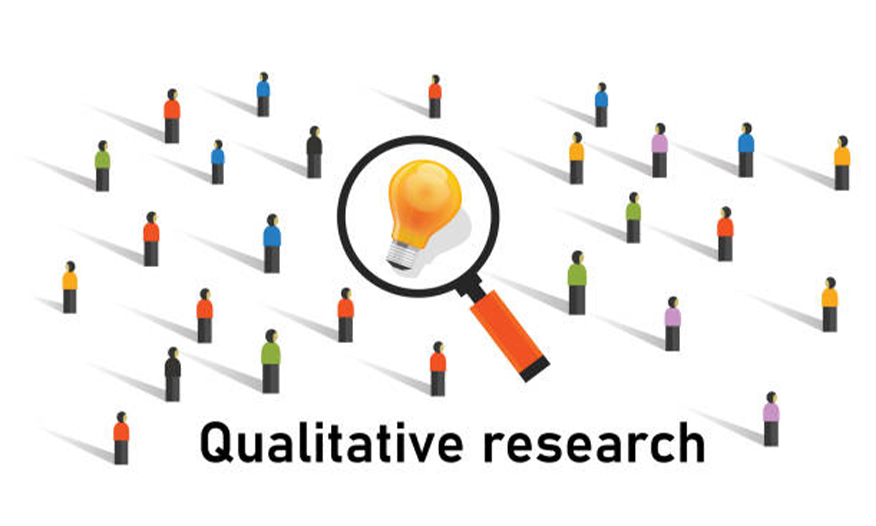
Data analysis is a vast, exploratory, and technically challenging area. However, if we step back and try to distill data analysis into its most basic components, it boils down to two methodologies: Quantitative and Qualitative research. Despite many overlapping characteristics, qualitative and quantitative research methods have inherent differences.
It’s critical to comprehend the primary distinctions between qualitative and quantitative data before delving into data analytics.
Definition Of Quantitative Research
It is an exploratory, unstructured research strategy used to examine highly complicated phenomena beyond the scope of quantitative study. However, it does provide conceptual frameworks and hypotheses for further quantitative investigation. In quantitative studies, numerical data is used for measurement, description, and prediction.
It is a type of research where the researcher gives the participants’ opinions more weight.
Visualize it as a measuring tool in which variables yield answers to questions such as “how many,” “how much,” and “how often.”
Studies using qualitative techniques include-
- case studies,
- grounded theory,
- ethnographies,
- historical studies, and
- phenomenological research.
Benefits And Drawbacks Of Quantitative Data
- Quantitative data is generally rapid and straightforward to gather, allowing you to work with massive samples.
- Compared to qualitative data, quantitative data is objective and less likely to be biased, simplifying the process of making trustworthy and applicable generalizations.
- Quantitative data’s fundamental drawback is that it sometimes lacks context and depth. Statistics aren’t always easy to interpret. For example, you might lose 70% of your newsletter subscribers in a week, but you won’t know why unless you look into it further.

Definition Of Qualitative Research
Before deciding what kind of research design or method will best answer the research question, the first step in qualitative research is to determine what type of qualitative data the researcher will need. It is possible to design and conduct research in various ways depending on the nature of the research problem and other limitations, such as time and finances.
Qualitative research methods included-
- Sociometric,
- Delphi technique,
- Case studies, and
- Ethnography
You can use qualitative data to answer the “why” question. Moreover, we do not intend to perform computations based on our responses. The purpose is to acquire extensive knowledge. These findings from qualitative research are used to form theories, interpret data, form working hypotheses, and gain preliminary insights.
Respondents to qualitative questionnaires typically answer questions open-ended, allowing them to express their opinions. For instance, a common question in qualitative market research for a new product could be, “What do you perceive to be the product’s key benefits?” We use these questions because we may not completely understand the market at an early research stage.
Additionally, we may form hypotheses about the product’s primary selling points based on our understanding of how people will respond. Therefore, it would be prudent to converse with a few people to understand their preferences.
Benefits And Drawbacks Of Qualitative Data
- Qualitative information excels where quantitative information fails. The main benefit of using qualitative data is studying the context surrounding a particular topic and gaining rich, in-depth insights. Suppose you’re in charge of any kind of business and want to comprehend how your target audience behaves. In that case, qualitative data will help you grasp how people truly feel and why they do certain things.
- You might have to use smaller samples while gathering qualitative data because it can be more complex and time-consuming. Due to the subjective character of qualitative data, bias must be considered while analyzing this type of data. Further qualitative research does not enable us to discuss averages, means, percentages, etc.

How is Qualitative Research Different from Quantitative Research?
- Unlike qualitative research, quantitative research involves the use of numerical data. To examine numerical data, researchers often employ descriptive and inferential statistics.
- In quantitative research, statistical methods can organize, analyze, interpret, and present numbers. However, data collected in quantitative research is gathered from many participants, which makes the response sample likely to represent the target market.
- Quantitative research, like qualitative research, can utilize a variety of methods. However, questionnaires and observation are the norms for market research objectives.
- In qualitative research, data is organized systematically to infer the original setting and meaning, unlike in quantitative research. Knowledge is gleaned from observation and textual data in qualitative research to understand processes better.
Qualitative And Quantitative Data Analysis
Whether collected in text, graphics, or audio format, qualitative data can be described and summarized through qualitative data analysis. It attempts to reveal latent theories and phenomena by drawing connections between ideas, concepts, and behaviour.
Conducting a qualitative analysis can be done in several different ways. Despite the formal analysis procedure and methodology, qualitative data analysis requires similar preparation. Analyzing qualitative data provides explanations for phenomena that are not measurable mathematically. Categorical is a term used to describe qualitative data when it is organized into classes (such as classes of people, objects, or processes).
Quantitative information is a measurable numerical record used to perform elementary mathematical operations. The characteristics of the distances between scale values determine whether quantitative data is metric or non-metric. There are many different scales, each with its method for characterizing the relationships between values.
Additionally, binary scales, the simplest of these types of scales, include only two groups: those who possess particular characteristics and those who do not. Both nominal and ordinal scales may have many categories depending on the measured variables.
One example is identifying a person’s gender, usually male or female. In the case of occupational qualifications, we may have more than one category, depending on the parameters of the categories.
An easy way to analyze the results of quantitative market research is to prepare the responses for easy analysis based on established questions. In most surveys, respondents are asked to choose options, rate items, provide points, or give a number. Using it, you don’t have to spend hours perusing hundreds of responses to analyze large data sets. Even if the answers to a quantitative survey can be qualitative, they are typically predetermined to be represented by a number or letter for simplicity of analysis.
Further, we need to recognize that quantitative versus qualitative data are not determinants of quantitative versus qualitative data. Quantitative market research studies can have qualitative questions, and qualitative ones can have quantitative questions.
Challenges
For quantitative analysis, a large amount of data must represent a population of interest. As a result, it is impossible to read through a large number of text responses efficiently when we receive a lot of responses to analyze. However, the problem with quantitative research is that you must predict which choices respondents will make beforehand.
Consequently, quantitative research is typically best suited for quantifying things you already know or believe are occurring. Is it possible to add a few qualitative open questions to the quantitative research? Of course.
However, if you want to conduct a quantitative study, you would need to code, that is, classify responses into comparable groups. It sounds easy, but coding responses after receiving them is a nightmare and arduous exercise.
Conclusion
There is no either/or in qualitative and quantitative research; rather, it depends on our stage in the market understanding process. Qualitative market research helps gain knowledge but not for measuring and optimizing.
Alternatively, quantitative market research assesses something that you already believe or know exists but are unsure of its extent. Therefore, it is probable that you will need to perform both tasks at some point.
Qualitative market research is the best method for testing the concept when developing a product. However, you should bet on a quantitative if you intend to optimize price.
In conclusion, qualitative and quantitative market research serve distinct purposes and are both valuable tools.
What Can SurveyPoint Do For You?
In the case of a survey, we require data from many participants, and surveys are tedious to complete. The research materials must be simpler to keep an interviewee interested for over an hour. After sending out a survey that takes an hour or longer to complete, the data quality may suffer if the respondents become exhausted after some time. Furthermore, respondents in the survey must have adequate reading comprehension skills to answer the questions independently.
Take the hassle of data collection and analysis out of the equation with SurveyPoint. Sign Up for Free Today!
Kultar Singh – Chief Executive Officer, Sambodhi




